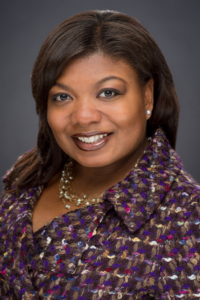This article forms part of our Latina Leaders celebration in honor of Hispanic Heritage month in the USA.
As we celebrate Hispanic Heritage Month 2015, Latina executives remain scarce in the corporate landscape. But ambition to lead, and ability to bring leadership advantages, are not scarce.
Walmart’s EVP and COO Debra Ruiz ranks 28 in Fortune’s current 50 Most Powerful Women in Business 2014 list. Latina Style celebrated ten executives in February, with Calline Sanchez, VP of IBM Enterprise, taking Corporate Executive of the Year 2014. Ana Dutra made history when she was appointed the first Latina president and CEO of the Executives’ Club of Chicago.
But with the growing influence of Latinas, there are too few, even dangerously too few, Latinas helping to steer companies.
In 2014, Latinas in the USA workforce (9,838,000) comprised 14% of female jobs. 26.1% were in management/professional occupations, holding 8.8% of women’s positions. 9.4% were in management, business, and financial operations, holding 9.1% of female positions. Latinas are the most under-represented females in managerial and professional jobs.
While Catalyst 2015 data indicates Latinas make up 6.2% of S&P 500 employees, they hold only 3.1% of first/mid-level positions, 1% of executive/senior level positions, and no CEO positions. Hispanic women occupied only 4.4% of S&P 500 women-held board seats in 2014, less than 1% of total board seats. The HACR CII data echoes the same numbers of non-representation.
Is the Path to Entrepreneurship More Accessible?
As written by Samantha Cole in Fast Company, “Women need to see someone else succeed—to know that their dreams are possible, and attainable by someone who’s not so different from them.”
For Latina business women, the majority of public role models aren’t somewhere up the corporate ladder. They’re braving the path of entrepreneurship.
Nely Galan, first Latina president of a U.S. Television Network turned media mogul notes deep cultural barriers to success in traditional pathways. She says Latina women are “a secret weapon to the economy” and encourages them to take business into their own hands to harness the economic pull they hold.
At its own risk, corporate America may be sending the same message.
According to an entrepreneurial report from the Center for American Progress, female-owned businesses increased by 59% between 1997 to 2013, while Latina-owned businesses increased by 180% during this same time, with 944,000 Latinas running their own businesses and turning $65.5 billion in receipts. Currently at 17%, Latinas will make up a fourth of the American female population by 2050.
Women entrepreneurs see it as an opportunity to be their own boss, have greater control over their destiny and pursue their passion. But roadblocks also lead Latinas onto the entrepreneurial path.
The report notes many challenges in organizations raised by all women of color that, despite the very real risks, may encourage Latinas to go it on their own. Across accountancy, securities and law, barriers included a lack of role models, low access to high-visibility assignments and client-facing opportunities important to career advancement, marginalization by stereotypes and exclusion from networks.
Stepping Into Latina Leadership – A Sum Greater Than Its Parts
The key to the advancement of Latina professional women is a corporate culture that supports it.
“[You] need to be in a company that embraces women,” Ileana Musa, managing director and Head of Global Client Segment and Strategy for Merrill Lynch and Chair of Women of ALPFA, recently told the Latin Post. “That gives you the resources and creates an environment where you can thrive.”
2015 Latina Style Top 50 companies are making progress, especially financial players in the top ten ranks including Accenture (#4), Prudential (#5), and Wells Fargo (#8). But we still await more tangible and visible outcomes in executive representation.
On that note, Musa also recommends that Latinas take risks and use their cultural assets in rising to leadership, rather than allowing their leadership potential to be defined by the circumstances.
Musa stated, “I don’t think Latinas recognize their strength and influence.” She spoke about cultural strengths in leadership. “From an early age we learn to bring others in, we work well in teams,” she said. “It is cultural, using that strength is a huge [advantage] in the workplace.”
Research also reflects that Latina leaders experience distinctive challenges but on the flip-side they possess culturally-derived leadership assets.
Latina leaders face an intersectionality of identities – being Latin, a woman, a leader. Many Latinas are actively connected in their culture and seeking to integrate at work. The whole is distinct, greater, more complex and more connected than the sum of its parts.
Qualitative research into Latina leadership has illustrated core challenges such as lack of mentors, lack of opportunities, and cultural and family obligations. These factors can also contribute to creating internal barriers to leadership.
But distinctive challenges comes with distinctive advantages. What Latina women bring to leadership is much greater than the sum of their identities.
Bonilla-Rodriguez observed that Latina leaders self-define towards transformational leadership, motivating followers to become leaders themselves, and participatory leadership, enabling group democracy and making everyone accountable for results.
Research participants believed effective Latina leaders possess five categories of characteristics:
- High Integrity—Ethical, honest, moral, responsible, and trustworthy.
- “Marianismo”— compassionate, good listener, understanding, service oriented and willing to sacrifice
- “New Latina” — ambitious, assertive, competitive, hard-working and determined
- Transformational Leader—team-building charismatic, collaborative, politically savvy, leads by example, good communicator
- Visionary—creative, committed, flexible, passionate, and risk taker
Research suggests that Latina leaders translate distinctive cultural implications– such as “marianismo” – into their leadership style by being empathetic and nurturing team leaders. Latina leaders have self-reported to be natural and skilled networkers, able to build connections beyond boundaries, leverage them towards achieving, and harness community.
Visible Change
The influence of challenges faced by Latina women along their leadership journeys cannot be separated from the leaders they become – leaders that overcome obstacles, make things possible, bridge cultures, and transcend roles.
If you’re a Latina leader in finance, STEM, or any other field of influence, your visibility matters if women are to follow in your footsteps. As stated by Dr. Frances Colón, Acting Science and Technology Adviser to the U.S. Secretary of State, “They can’t be you if they can’t see you.”
But with the inherent power of Latina leadership, it seems to us the big question may not for long be: When will Latina women rise to executive leadership in major, existing firms?
It may instead be: How will they come to change leadership as they rise?
By Aimee Hansen


